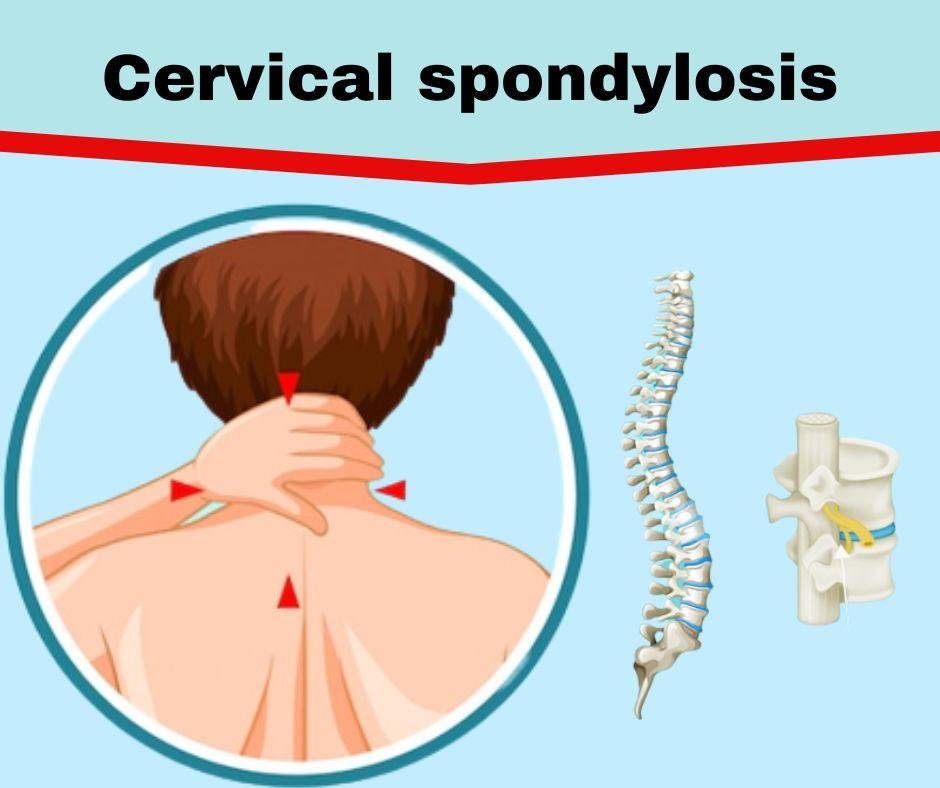As we age, the spinal disks in our necks begin to degenerate, a condition known as cervical spondylosis. When the disks dry up and shrink, osteoarthritis symptoms like bony outgrowths at the ends of bones appear (bone spurs).
The degenerative condition known as cervical spondylosis is quite prevalent and often worsens with age. Over eighty-five percent of the over-60 crowd suffer from cervical spondylosis. In most cases, cervical spondylosis does not manifest itself clinically. The good news is that nonsurgical therapies are typically successful when symptoms do arise. If you are looking for the best Cervical spondylosis specialist in Pune, contact Dr. Vikram Rajguru.
Symptoms of Cervical Spondylosis
Few individuals really have symptoms, neck pain and stiffness are the most common symptoms. Cervical spondylosis may cause a reduction in spinal canal size by weakening the ligaments that separate the vertebrae (the vertebrae).
The spinal canal is the hollow cavity inside the spinal column through which the spinal cord and nerves exit the rest of the body. Pinching of the spinal cord or nerve roots may cause the following symptoms:
- Arms, hands, legs, or feet that tingle, become numb or feel feeble.
- Unsteadiness and clumsiness in walking indicate a lack of coordination.
- Disrupted ability to regulate bowels or bladder
Causes of Cervical Spondylosis
Wear and tear on the spinal column and the neck’s supporting tissues is a natural consequence of aging. Alterations may include,
- Dry, brittle disks – The disks between the spine’s vertebrae function as cushions. Most individuals experience drying out and shrinkage of their spinal disks by the time they reach the age of 40. With fewer disks between the vertebrae, the bones rub against one another more.
- Disc herniation – The outside of the spinal disks may also develop fissures. The disk’s pliable center may easily pass through these fissures. At times, it puts pressure on the spinal cord and nerve roots.
- Calcium deposits on the surface of bones – In an attempt to counteract the effects of disk degeneration, the body may start producing abnormally large quantities of bone. At times, bone spurs may put pressure on the spinal cord or nerve roots.
- Rigid connective tissue – Bones are joined together by ligaments, which are bands of connective tissue. Due to age-related stiffening of spinal ligaments, neck mobility may decrease.
Conclusion
In extreme cases of cervical spondylosis, the spinal cord and/or nerve roots may get compressed, causing irreversible injury so look for the best treatment in Pune provided by the Prolotherapy Clinic.
Dr. Vikram Rajguru is one of India’s first interventional Regenerative Orthopedic and OrthoBiologic surgeons. He is one of a handful of surgeons in the nation that is both an Orthopedic Surgeon in Pune and an expert in the field of Interventional Regenerative Orthopedics and Sports Medicine.
The Prolotherapy Clinic (PTC®) was founded by Dr. Vikram Rajguru as a response to the shortcomings so evident in traditional medicine, which largely places a premium on high patient turnover while neglecting long-term health care. PTC® is India’s first center dedicated to practicing regenerative procedures like Prolotherapy in an Orthopedic clinical setting.

